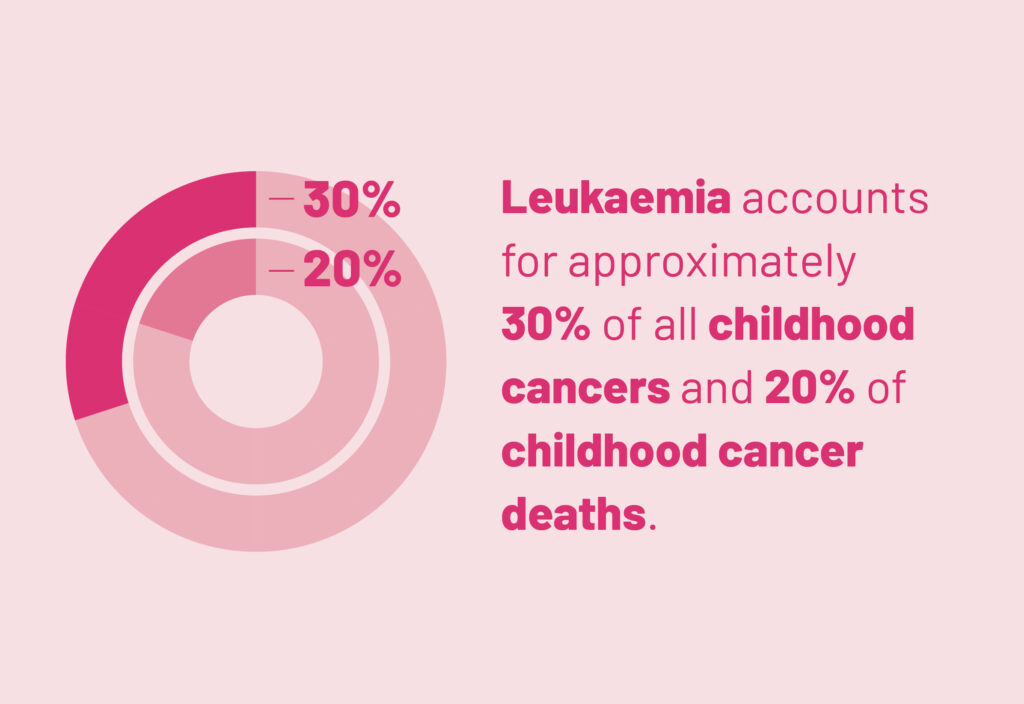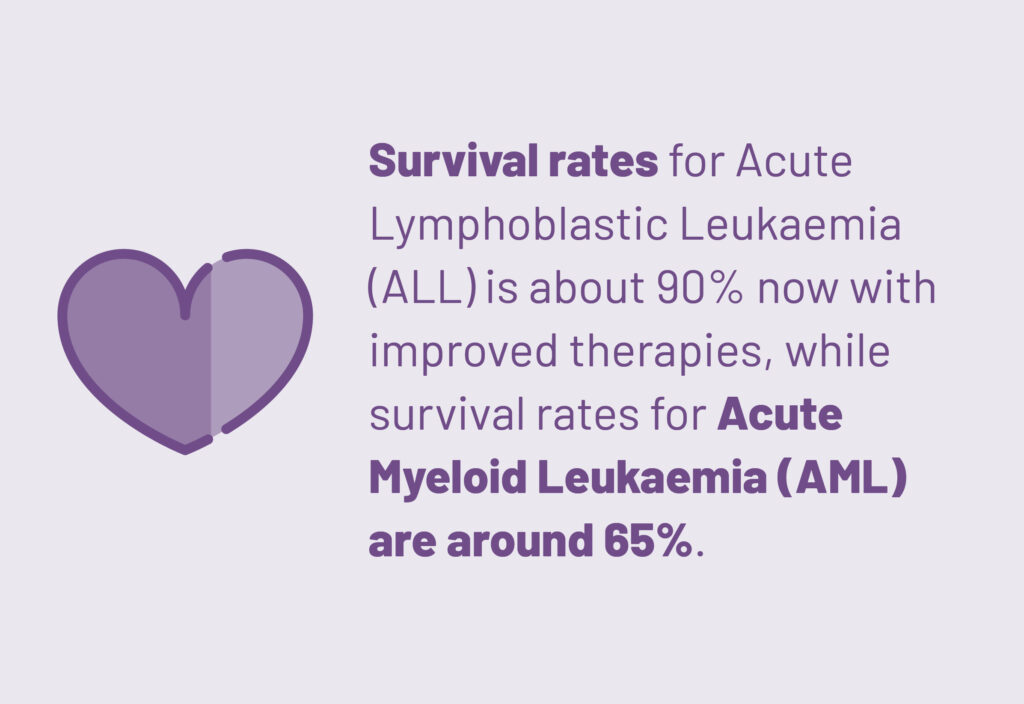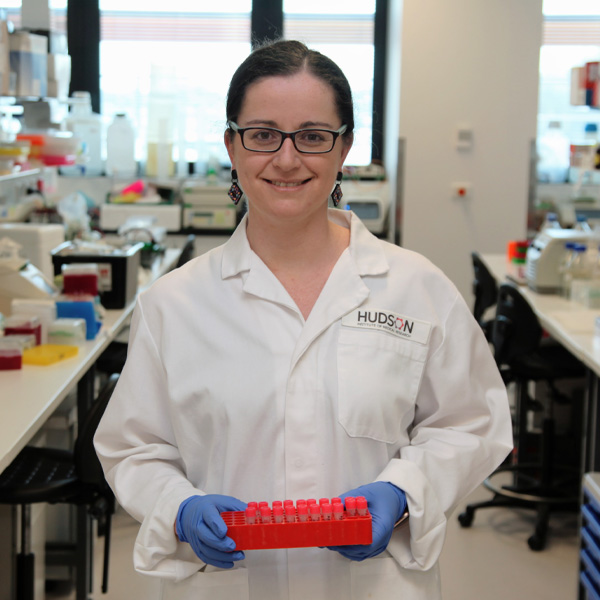Childhood blood cancer: new treatment approach
By Rob Clancy, staff writer. Reviewed by Dr Catherine Carmichael

Dr Catherine Carmichael aims to identify the key mechanisms that drive development of an aggressive form of childhood blood cancer, acute myeloid leukaemia (AML).
At a glance
Dr Catherine Carmichael is investigating the key mechanisms underpinning the development, relapse and therapy resistance of childhood AML. She aims to develop innovative new models of childhood AML that recapitulate the human disease and can be used to gain an enhanced understanding of how this disease develops and how it can be stopped.
The two types of experimental models that Dr Carmichael is developing will allow her team to develop new treatments for childhood AML with reduced toxicity, enhanced efficacy and increased likelihood of long-term remission and cure.
Leukaemia is the most common form of cancer diagnosed in children and the second leading cause of cancer-related death in children.
About 40 per cent of children diagnosed with AML do not survive past five years, and many of those who do survive will suffer long-term side effects from the highly toxic treatment that cured their leukaemia.
Side effects can include damage to the heart, brain and reproductive organs, as well as a higher rate of secondary cancers later in life.
Dr Carmichael , Group Head Leukaemia Modelling and Therapeutic Discovery Research and her team are working to develop non-chemotherapeutic and less toxic treatments, so these young people can make the most of their second chance at life.
This all starts with a better understanding of how the childhood blood cancer develops and identifying key weaknesses that can be targeted with new therapies.
“Our overall aim is to identify new treatments for this aggressive disease, saving children from not just leukaemia, but the unwanted effects of current cancer therapy.” Dr Catherine Carmichael.
This is where the science gets really interesting, as Dr Carmichael explains: “Up to 80 per cent of childhood and infant AMLs are driven by large chromosomal abnormalities called gene fusions, which lead to the impaired activity of critical blood cell regulators.”
“Targeting these gene fusions would be transformative for AML therapy, but currently most gene fusions remain undruggable. So, our research focuses instead on performing large-scale unbiased drug and genetic screens to identify unique druggable gene targets that AML cells depend on to survive,” she said.
A major problem to overcome is the fact that AML cells derived from patients can only survive in the laboratory for a short period of time, so Dr Carmichael and her team are developing new approaches to generate renewable sources of AML cells for ongoing analysis in the laboratory.
Stem cell innovation: creating renewable AML cells
The first approach they are using involves generating AML gene fusions within human blood stem cells and using these cells to induce AML in immunocompromised mice.
The second approach involves using the Nobel Prize-winning induced pluripotent stem cell (iPSC) technology to reprogram AML cells from patients back into an immature stem cell-like state. These so-called AML-derived iPSCs can then be expanded indefinitely in the laboratory.
Both approaches will provide Dr Carmichael and her team with a ready source of AML cells for large-scale experimental study and identification of new drug targets.
Ultimately, Dr Carmichael’s team aims to develop new treatment options for childhood AML, which will be more effective and have reduced toxicity and long-term side effects.
Dr Carmichael’s overall aim is to explore new potential treatments for this poor-outcome disease, saving countless children from not just leukaemia, but the unwanted acute and chronic effects of current cancer treatments.
Blood cancer 101
- Blood cancers arise when blood cells start to grow abnormally and uncontrollably. These abnormal blood cells usually arise in the bone marrow and continue to grow and expand until they fill up the bone marrow and impair its ability to generate normal blood cells.
- There are several different types of blood cancer that are distinguished by the form of blood cell affected and the way that an abnormal blood cell behaves. Some of the more commonly diagnosed blood cancers include leukaemia, lymphoma, myeloproliferative neoplasm, myelodysplastic syndrome and myeloma.
- With the development of new and improved therapies, some blood cancers such as Acute Lymphoblastic Leukaemia (ALL) in children now have very high cure rates above 80 per cent.
- Other blood cancers such as aggressive forms of Acute Myeloid Leukaemia (AML), however, can still have as low as a 25 per cent chance of cure with current treatment strategies.



In this issue of Hudson News Summer 2024
In this article
About Hudson Institute
Hudson Institute’ s research programs deliver in three areas of medical need – inflammation, cancer, women’s and newborn health. More
Hudson News
Get the inside view on discoveries and patient stories
“Thank you Hudson Institute researchers. Your work brings such hope to all women with ovarian cancer knowing that potentially women in the future won't have to go through what we have!”







